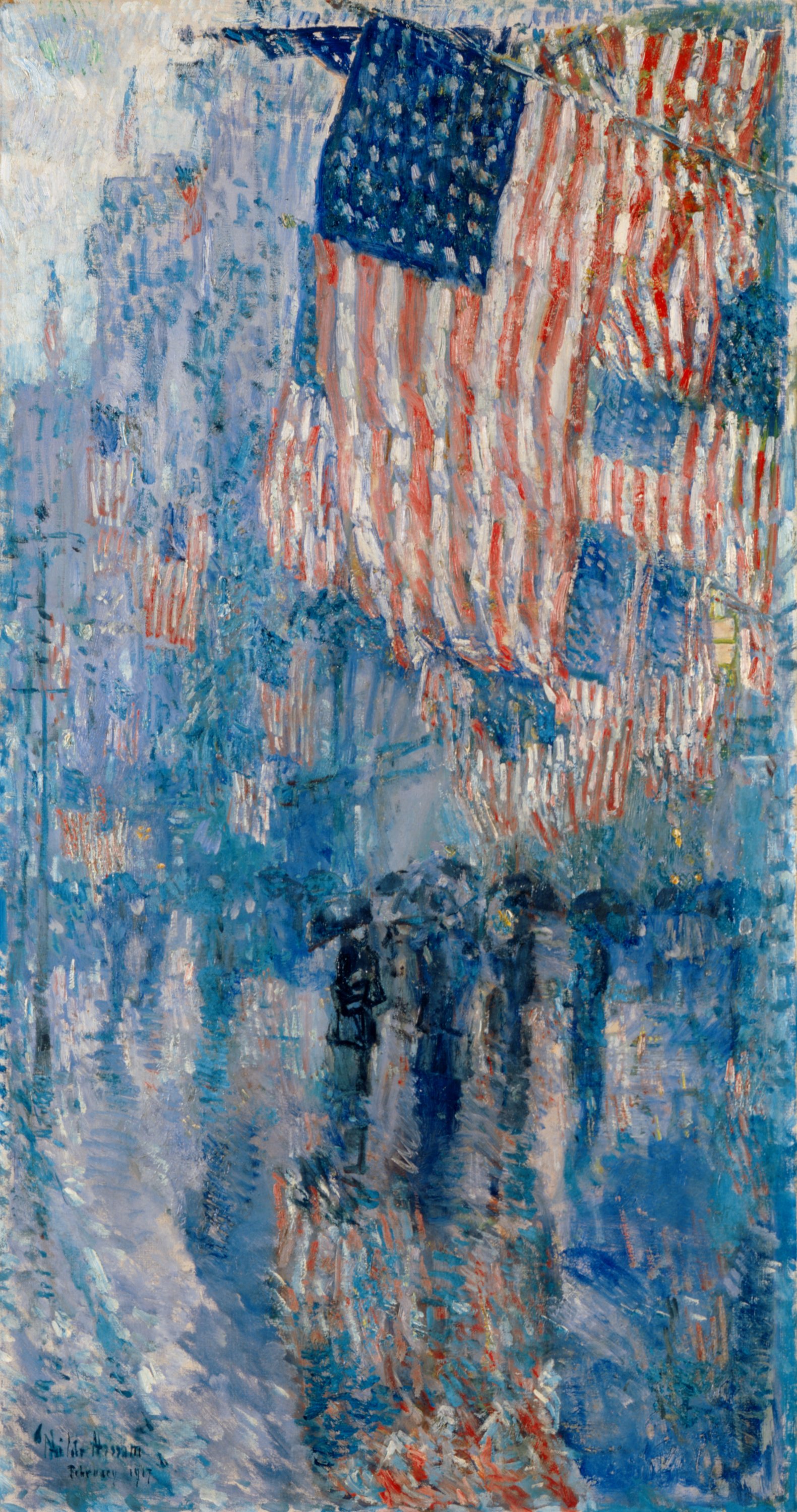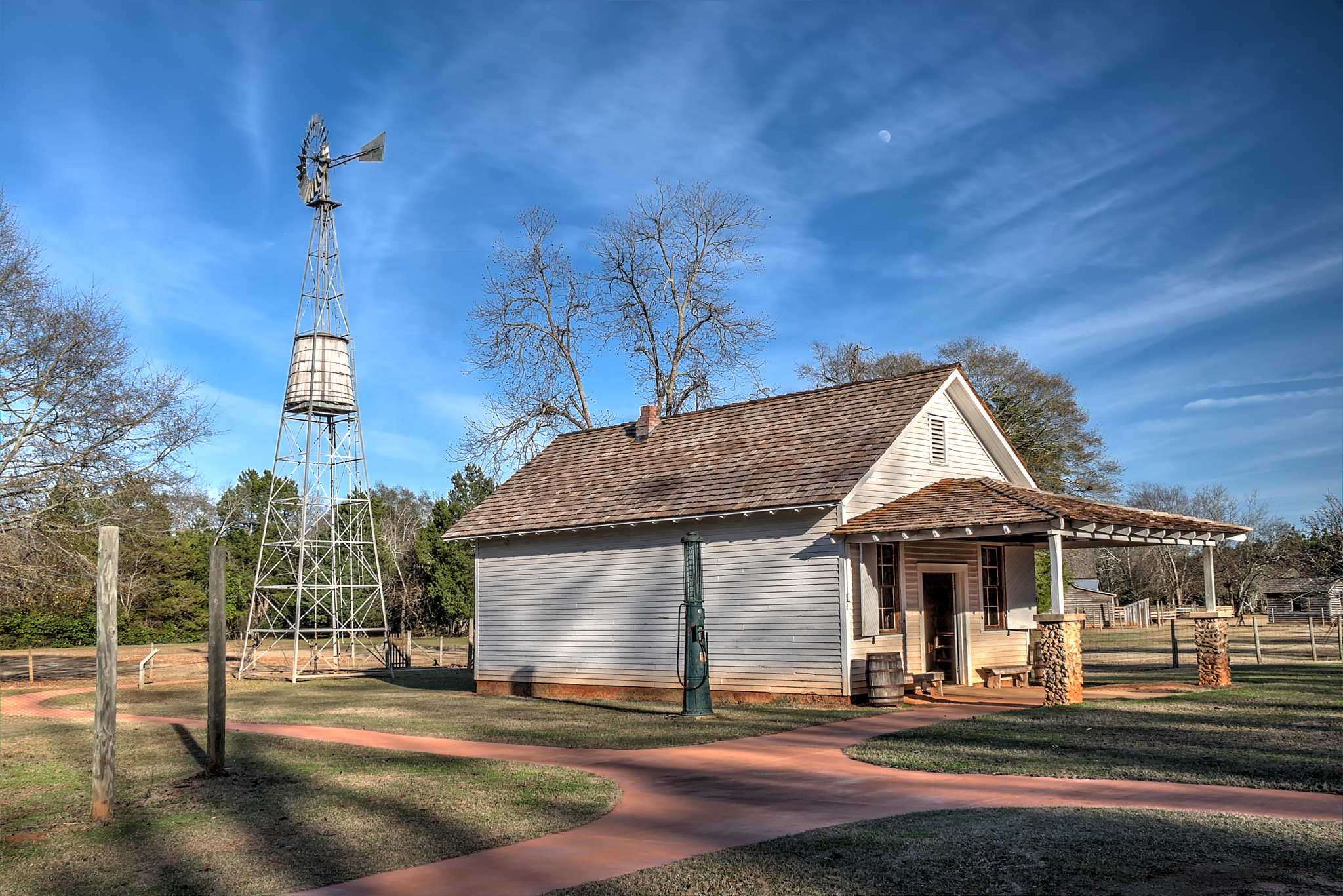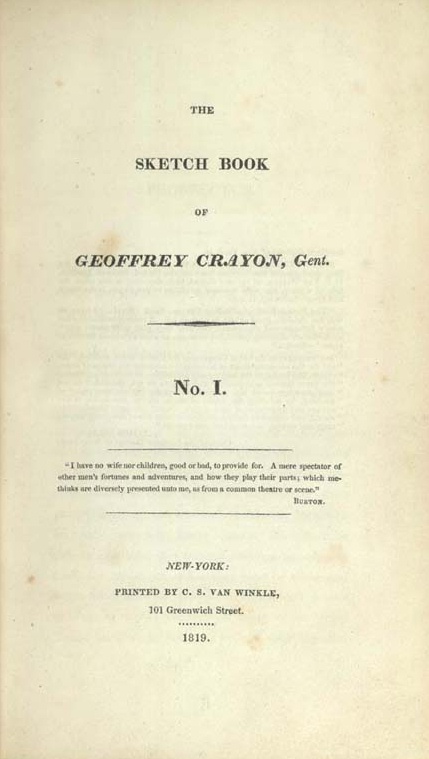|
Dismissal Of School On An October Afternoon
''Dismissal of School on an October Afternoon'' was painted by Henry Inman. An elected founding member of the National Academy of Design, Inman was well known in the New York City art scene. Although predominately known for his portrait paintings, Henry Inman was also known for painting genre scenes and literary subjects. Commissioned by James Cozzens, this painting was finished on November 8, 1845, which makes it his last completed painting before his January 1846 death. It is a culmination of his successful career, as it is a blend of landscape, genre, and literary reference. Painting This depicts a scene of childhood in mid-1840s rural America. The sweeping view of the northeastern American landscape coupled with the romantic depiction of an autumn afternoon shows the influence of the Hudson River School. Inman alludes to Washington Irving's Legend of Sleepy Hollow, which was also set in the Hudson Valley. Referencing the protagonist in Irving’s story, the painting’s teac ... [...More Info...] [...Related Items...] OR: [Wikipedia] [Google] [Baidu] |
Henry Inman (painter)
Henry Inman (October 20, 1801 – January 17, 1846) was an American portrait, genre, and landscape painter. Early life He was born at Utica, New York, to English immigrant parents who were among the first settlers of Utica. His family moved to New York City in 1812. Beginning in 1814 and continuing for the next seven years, he was an apprentice pupil of John Wesley Jarvis in New York City, along with John Quidor. Career He was the first vice president of the National Academy of Design. He excelled in portrait painting, but was less careful in genre pictures. Among his landscapes are ''Rydal Falls, England'', ''October Afternoon'', and ''Ruins of Brambletye''. His genre subjects include ''Rip Van Winkle'', ''The News Boy'', and ''Boyhood of Washington''. His portraits include those of Henry Rutgers and Fitz-Greene Halleck in the New York Historical Society. He also painted portraits of Angelica Singleton Van Buren, Bishop White, Chief Justices Marshall and Nelson, Jacob Bar ... [...More Info...] [...Related Items...] OR: [Wikipedia] [Google] [Baidu] |
American Art-Union
The American Art-Union (1839–1851) was a subscription-based organization whose goal was to enlighten and educate an American public to a national art, while providing a support system for the viewing and sales of art “executed by artists in the United States or by American artists abroad." Art unions had been popular since the early 19th century in Europe; they first appeared in Switzerland, gaining great popularity in both Germany and the United Kingdom in the 1830s. It was the British version — Art Union of London (AUL) — that was used as a model for the American Art-Union (AAU). Description For five dollars a year, the members of the AAU would receive a copy of the minutes from the annual meeting, free admission to the Gallery, at least one original engraving published by the Union from an original piece of art by a contemporary American artist, and in New York City, the members also received a ticket in a lottery to win an original piece of art from within ... [...More Info...] [...Related Items...] OR: [Wikipedia] [Google] [Baidu] |
Paintings In The Collection Of The Museum Of Fine Arts, Boston
Painting is the practice of applying paint, pigment, color or other medium to a solid surface (called the "matrix" or "support"). The medium is commonly applied to the base with a brush, but other implements, such as knives, sponges, and airbrushes, can be used. In art, the term ''painting ''describes both the act and the result of the action (the final work is called "a painting"). The support for paintings includes such surfaces as walls, paper, canvas, wood, glass, lacquer, pottery, leaf, copper and concrete, and the painting may incorporate multiple other materials, including sand, clay, paper, plaster, gold leaf, and even whole objects. Painting is an important form in the visual arts, bringing in elements such as drawing, composition, gesture (as in gestural painting), narration (as in narrative art), and abstraction (as in abstract art). Paintings can be naturalistic and representational (as in still life and landscape painting), photographic, abstract, narrative, ... [...More Info...] [...Related Items...] OR: [Wikipedia] [Google] [Baidu] |
Art In The White House
The White House's art collection, sometimes also called the White House Collection or Pride of the American Nation, has grown over time from donations from descendants of the Founding Fathers to commissions by established artists. It comprises paintings, sculptures, and other art forms. At times, the collection grows from a president's specific request, such as when Ronald Reagan began collecting the work of naval artist Tom Freeman in 1986, a tradition that continued through the Obama years. History The White House's Art collection was established by an Act of Congress in 1961 and grew extensively during the Kennedy Administration. It now includes more than 65,000 objects if individual items are catalogued. As of 2021, there are more than 500 pieces on view under the care of the White House Curator and the White House Historical Association, and these are often complemented by those on loan from museums. Gallery ;Portraits File:Gilbert Stuart - George Washington (Lansdowne Portr ... [...More Info...] [...Related Items...] OR: [Wikipedia] [Google] [Baidu] |
President Jimmy Carter
James Earl Carter Jr. (born October 1, 1924) is an American politician who served as the 39th president of the United States from 1977 to 1981. A member of the Democratic Party, he previously served as the 76th governor of Georgia from 1971 to 1975 and as a Georgia state senator from 1963 to 1967. Since leaving office, Carter has remained engaged in political and social projects, receiving the Nobel Peace Prize in 2002 for his humanitarian work. Born and raised in Plains, Georgia, Carter graduated from the United States Naval Academy in 1946 with a Bachelor of Science degree and joined the United States Navy, serving on numerous submarines. After the death of his father in 1953, he left his naval career and returned home to Plains, where he assumed control of his family's peanut-growing business. He inherited little, due to his father's forgiveness of debts and the division of the estate amongst himself and his siblings. Nevertheless, his ambition to expand and grow the fa ... [...More Info...] [...Related Items...] OR: [Wikipedia] [Google] [Baidu] |
White House
The White House is the official residence and workplace of the president of the United States. It is located at 1600 Pennsylvania Avenue NW in Washington, D.C., and has been the residence of every U.S. president since John Adams in 1800. The term "White House" is often used as a metonym for the president and his advisers. The residence was designed by Irish-born architect James Hoban in the neoclassical style. Hoban modelled the building on Leinster House in Dublin, a building which today houses the Oireachtas, the Irish legislature. Construction took place between 1792 and 1800, using Aquia Creek sandstone painted white. When Thomas Jefferson moved into the house in 1801, he (with architect Benjamin Henry Latrobe) added low colonnades on each wing that concealed stables and storage. In 1814, during the War of 1812, the mansion was set ablaze by British forces in the Burning of Washington, destroying the interior and charring much of the exterior. Reconstruction began ... [...More Info...] [...Related Items...] OR: [Wikipedia] [Google] [Baidu] |
Maxim Karolik
Maxim Karolik (November 21, 1893 – December 20, 1963), born in what is now Ukraine, he became a featured tenor for the Imperial Russian Grand Opera (later known as the Petrograd Grand Opera). He toured in Europe as a young man. He left Russia during the Bolshevik Revolution and moved to the United States to continue study of music. There he met and married Martha Catharine Codman, from one of Boston, Massachusetts's wealthiest families. He became a noted collector of early American art, and the couple were influential in promoting eighteenth and nineteenth American art and antiques. In 1939 and 1947 they made valuable donations of their collections to the Museum of Fine Arts, Boston, where a new wing was built and named for them. Early life Maxim Karolik was born on November 21, 1893 in Akkerman, Ukraine. He became a professional opera singer, and made his debut as a tenor at the old Imperial Russian Grand Opera, later known as the Petrograd Opera. He toured in Europe, i ... [...More Info...] [...Related Items...] OR: [Wikipedia] [Google] [Baidu] |
New York Public Library
The New York Public Library (NYPL) is a public library system in New York City. With nearly 53 million items and 92 locations, the New York Public Library is the second largest public library in the United States (behind the Library of Congress) and the fourth largest in the world. It is a private, non-governmental, independently managed, nonprofit corporation operating with both private and public financing. The library has branches in the boroughs of the Bronx, Manhattan, and Staten Island and affiliations with academic and professional libraries in the New York metropolitan area. The city's other two boroughs, Brooklyn and Queens, are not served by the New York Public Library system, but rather by their respective borough library systems: the Brooklyn Public Library and the Queens Public Library. The branch libraries are open to the general public and consist of circulating libraries. The New York Public Library also has four research libraries, which are also open to the ge ... [...More Info...] [...Related Items...] OR: [Wikipedia] [Google] [Baidu] |
Lenox Library (New York)
The Lenox Library was a library incorporated and endowed in 1870. It was both an architectural and intellectual landmark in Gilded Age–era New York City. It was founded by bibliophile and philanthropist James Lenox, and located on Fifth Avenue between 70th and 71st Streets on the Upper East Side of Manhattan. Renowned architect Richard Morris Hunt designed the building, which was considered one of the city's most notable buildings, until its destruction in 1912. The library's collection was unsurpassed in its collection of Bibles, and included the first Gutenberg Bible to cross the Atlantic. It was also known for its collection of Shakespeare, Milton, and early American literature. The library became a part of the founding collection of the New York Public Library (NYPL) in 1895, and opened to the public as part of the NYPL's Main Branch in 1911. Early history The Lenox Library began as the personal collection of James Lenox, and was housed in his home at 53 Fifth Avenue, ... [...More Info...] [...Related Items...] OR: [Wikipedia] [Google] [Baidu] |
James Lenox
James Lenox (August 19, 1800 – February 17, 1880) was an American bibliophile and philanthropist. His collection of paintings and books eventually became known as the Lenox Library and in 1895 became part of the New York Public Library. Early life Lenox was born in New York City on August 19, 1800. He was the only surviving son of six children born to Rachel (née Carmer) Lenox and Robert Lenox (1759–1839). His father was a wealthy merchant who was born in Kirkcudbright, Scotland, emigrated to America during the Revolutionary War, and settled in New York in 1783. Of his five sisters, four married and one remained single, like Lenox, throughout her life. His maternal grandfather was Nicholas Carmer, a New York cabinet maker. Upon his father's death in 1839, Lenox inherited a fortune of over a million dollars and 30 acres of land between Fourth and Fifth Avenues. A graduate of Columbia College, he studied law and was admitted to the bar, but never practiced. He retired f ... [...More Info...] [...Related Items...] OR: [Wikipedia] [Google] [Baidu] |
Princeton University Art Museum
The Princeton University Art Museum (PUAM) is the Princeton University gallery of art, located in Princeton, New Jersey. With a collecting history that began in 1755, the museum was formally established in 1882, and now houses over 113,000 works of art ranging from antiquity to the contemporary period. The Princeton University Art Museum dedicates itself to supporting and enhancing the university's goals of teaching, research, and service in fields of art and culture, as well as to serving regional communities and visitors from around the world. Its collections concentrate on the Mediterranean region, Western Europe, Asia, the United States, and Latin America. The museum has a large collection of Greek and Roman antiquities, including ceramics, marbles, bronzes, and Roman mosaics from Princeton University's excavations in Antioch. Medieval Europe is represented by sculpture, metalwork, and stained glass. The collection of Western European paintings includes examples from the earl ... [...More Info...] [...Related Items...] OR: [Wikipedia] [Google] [Baidu] |
Rip Van Winkle
"Rip Van Winkle" is a short story by the American author Washington Irving, first published in 1819. It follows a Dutch-American villager in colonial America named Rip Van Winkle who meets mysterious Dutchmen, imbibes their liquor and falls asleep in the Catskill Mountains. He awakes 20 years later to a very changed world, having missed the American Revolution. The concept is ancient, including the 70-year nap by Choni HaMeA-Gail. Irving, inspired by a conversation on nostalgia with his American expatriate brother-in-law, wrote his story while temporarily living in Birmingham, England. It was published in his collection, ''The Sketch Book of Geoffrey Crayon, Gent.'' While the story is set in New York's Catskill Mountains near where Irving later took up residence, he admitted, "When I wrote the story, I had never been on the Catskills." Plot Rip Van Winkle, a Dutch-American man with a habit of avoiding useful work, lives in a village at the foot of New York's Catskill Mount ... [...More Info...] [...Related Items...] OR: [Wikipedia] [Google] [Baidu] |







.png)
